Modern minimalist interior design is a style that has been gaining popularity in recent years. This aesthetic is characterised by its simplicity, functionality, and elegance. It is a style that encourages you to pare down your possessions and focus on the essentials, creating a clutter-free and calming environment.
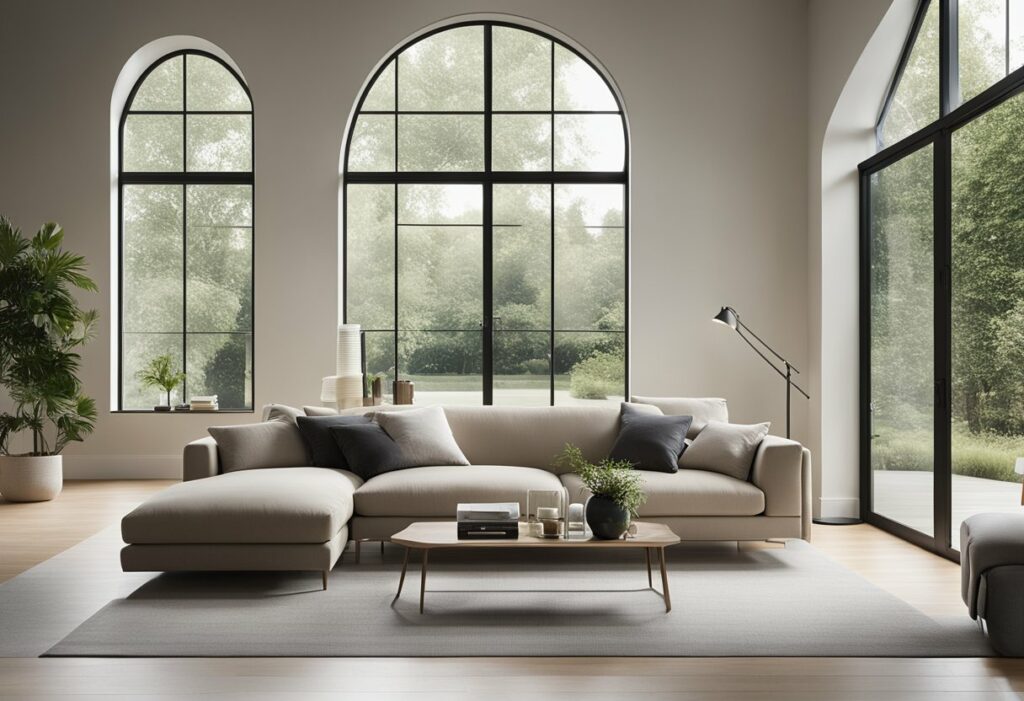
At its core, minimalist design is about creating a space that is free from distractions and unnecessary clutter. It is a style that values quality over quantity, and encourages you to choose pieces that are both beautiful and functional. When it comes to modern minimalist interior design, this means opting for sleek, clean-lined furniture, geometric shapes, and a neutral colour palette.
Whether you are looking to create a minimalist living room, bedroom, or kitchen, there are a few key elements that you should keep in mind. In this article, we will explore the foundations of minimalist design, the characteristics of modern minimalist interiors, and strategies for creating a clutter-free home. We will also look at how you can incorporate minimalism into your lifestyle, and provide tips for personalising your minimalist space.
Foundations of Minimalist Design
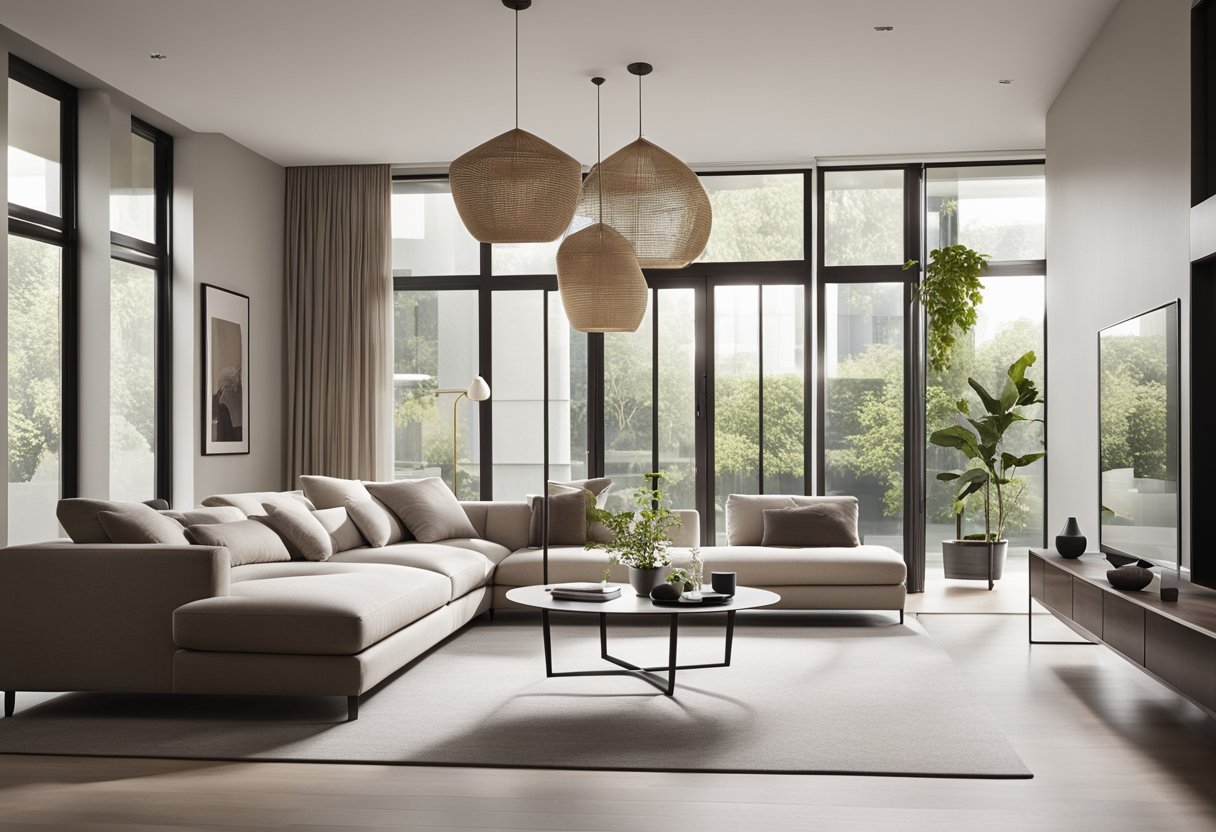
Minimalism is a design philosophy that emphasises simplicity, functionality, and the use of minimal elements. It is a style that has been gaining popularity in recent years due to its clean and uncluttered aesthetic. In this section, we will explore the principles of minimalism and its history and evolution.
Principles of Minimalism
The principles of minimalism are based on the concept of “less is more”. This means that the design should be stripped down to its essential elements, leaving only what is necessary for the function of the space. Clean lines and simple forms are key elements of minimalist design.
Mies van der Rohe, a famous architect and designer, was a pioneer of minimalist design. He believed that “less is more” and that simplicity was the key to good design. His famous phrase “God is in the details” emphasises the importance of paying attention to the small things in design.
History and Evolution
Minimalism has its roots in the art world, where it emerged as a movement in the 1960s. It was a reaction against the excesses of abstract expressionism and the decorative arts. Minimalist artists like Donald Judd and Dan Flavin used simple geometric forms and industrial materials to create their art.
In the 1980s, minimalism began to influence the design world. Designers like John Pawson and Jasper Morrison embraced the principles of minimalism and applied them to architecture and product design. Today, minimalist design has become a mainstream style, with many people embracing its simplicity and functionality.
In conclusion, minimalism is a design philosophy that emphasises simplicity, functionality, and the use of minimal elements. It is a style that has been gaining popularity in recent years due to its clean and uncluttered aesthetic. The principles of minimalism are based on the concept of “less is more”, and clean lines and simple forms are key elements of minimalist design. Mies van der Rohe was a pioneer of minimalist design, and his famous phrase “God is in the details” emphasises the importance of paying attention to the small things in design.
Characteristics of Modern Minimalist Interiors
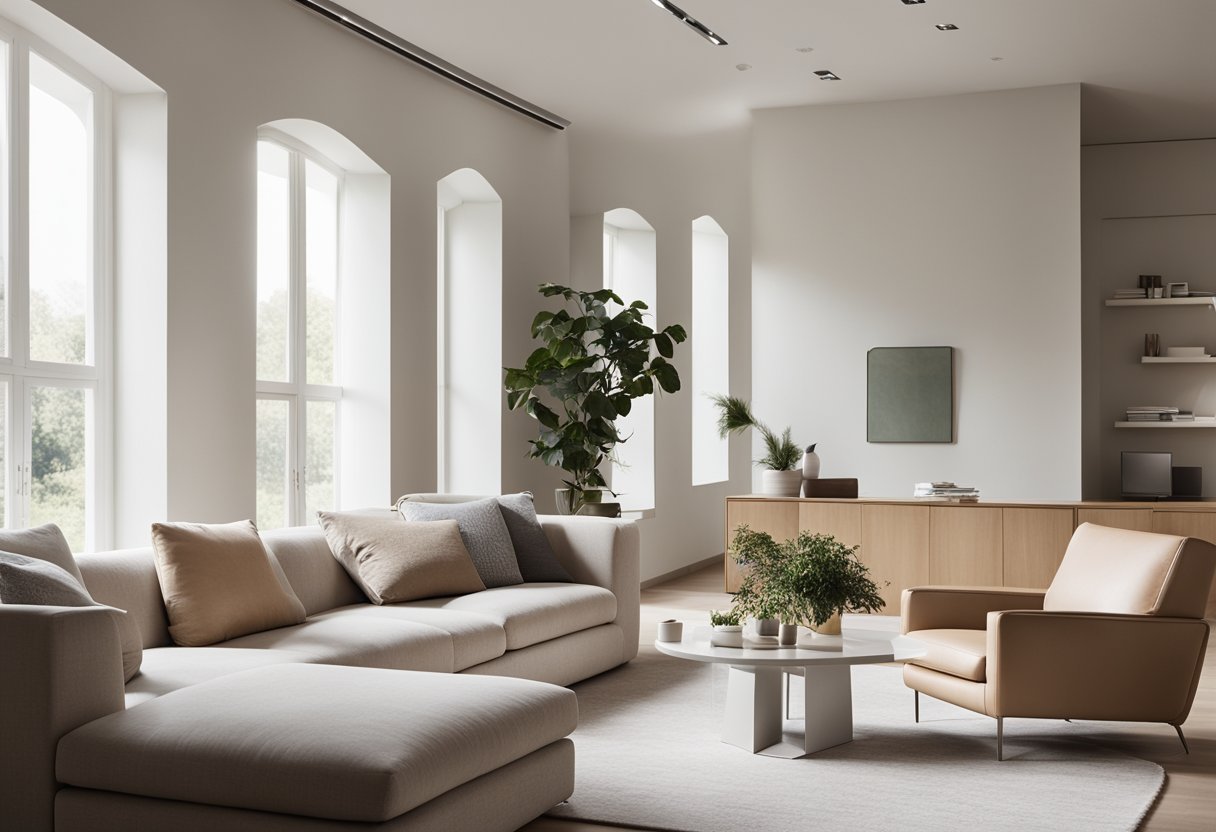
If you are looking to create a modern minimalist interior, it is important to understand the key characteristics that define this style. In this section, we will explore the most important features of modern minimalist interiors, including colour and texture, furniture and decor, lighting and space.
Colour and Texture
Modern minimalist interiors are known for their simple, clean lines and limited colour palette. The focus is on creating a calm, serene atmosphere, with colours that are muted and understated. Shades of white, beige, and grey are commonly used, with occasional pops of colour used sparingly as accents.
Texture is also an important element in modern minimalist interiors. Natural materials such as wood, stone, and concrete are often used to add interest and depth to a space. Textiles such as linen, cotton, and wool can also be used to add warmth and texture to a room.
Furniture and Decor
When it comes to furniture and decor, less is definitely more in a modern minimalist interior. The focus is on creating a sense of openness and spaciousness, with furniture that is simple and uncluttered. Furniture with clean lines and a minimalist aesthetic is preferred, with a focus on functionality and practicality.
Decorative items should also be kept to a minimum, with a few carefully chosen pieces used to add interest and personality to a space. Artwork, plants, and other decorative elements can be used to add colour and texture to a room, but should be used sparingly to avoid clutter.
Lighting and Space
Lighting is an important element in any interior design, but it is especially important in a modern minimalist interior. Natural light is preferred, with large windows and skylights used to bring in as much light as possible. Artificial lighting should also be carefully considered, with fixtures that are simple and unobtrusive.
Space is also a key element in modern minimalist interiors. The focus is on creating a sense of openness and spaciousness, with furniture and decor arranged in a way that maximises the available space. Clutter should be avoided at all costs, with a focus on creating a clean, uncluttered look that is both calming and inviting.
In summary, modern minimalist interiors are all about simplicity, calmness, and functionality. By using a limited colour palette, natural materials, simple furniture and decor, and careful lighting and space planning, you can create a space that is both stylish and inviting.
Functional Minimalism in Different Spaces
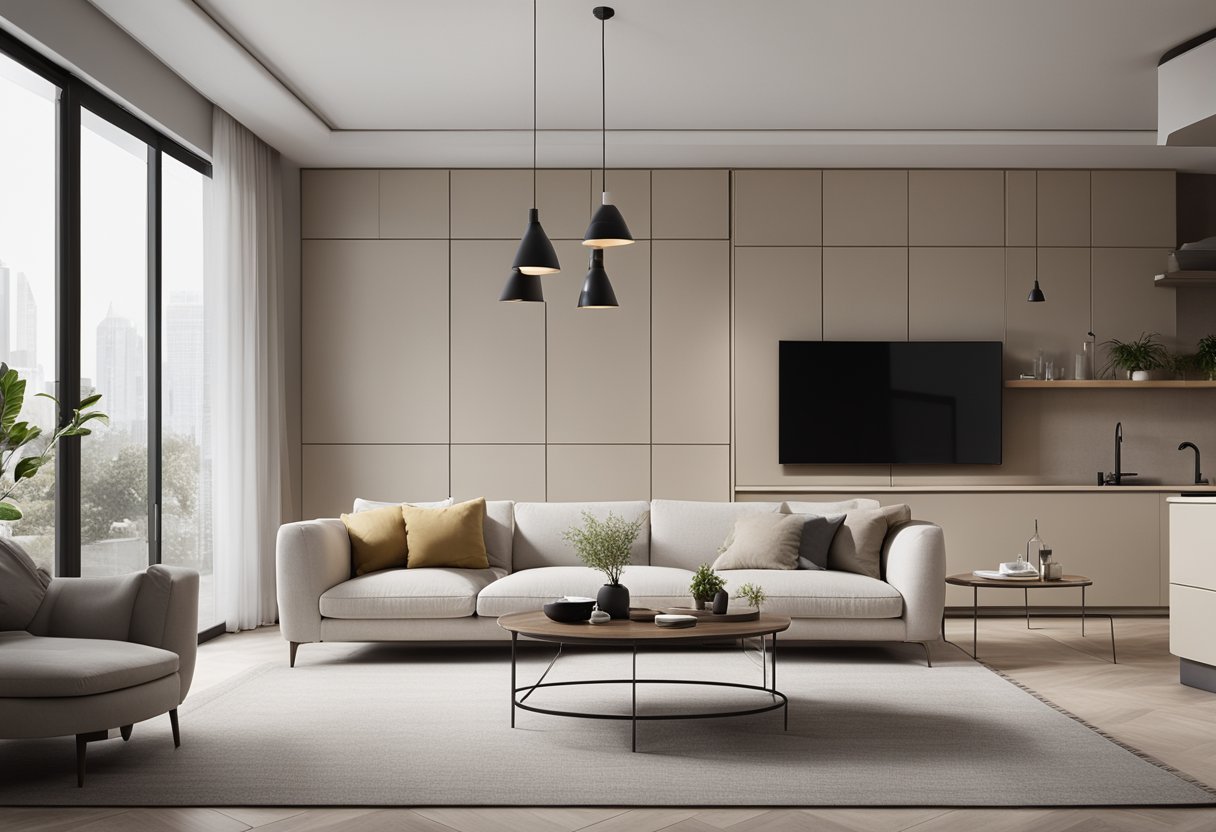
When it comes to modern minimalist interior design, functionality is key. The idea is to create spaces that are not only visually appealing, but also practical and livable. Here are some tips for achieving functional minimalism in different spaces of your home.
Living Room Essentials
In a minimalist living room, less is more. Stick to the essentials, such as a comfortable sofa, a coffee table, and a few carefully chosen pieces of decor. Opt for furniture with clean lines and neutral colours, and keep clutter to a minimum. Open floor plans and large windows can help create a sense of spaciousness and lightness.
Minimalist Kitchen Design
In a minimalist kitchen, functionality is paramount. Opt for sleek, uncluttered cabinets and countertops, and choose appliances that blend seamlessly into the design. Keep the colour palette neutral, with pops of natural materials such as wood or stone. Consider incorporating a kitchen island or breakfast bar for added functionality.
Dining Room Simplicity
In a minimalist dining room, the focus should be on the dining table and chairs. Choose a table that is both functional and stylish, and opt for chairs with clean lines and minimal detailing. Keep the decor to a minimum, with perhaps a simple vase of fresh flowers as a centrepiece.
Tranquil Bedrooms
In a minimalist bedroom, the aim is to create a calm and tranquil space for rest and relaxation. Stick to a neutral colour palette, with perhaps a pop of colour in the form of a throw or cushion. Opt for a simple bed frame and bedding, and keep clutter to a minimum. Consider incorporating storage solutions such as built-in wardrobes to keep the space uncluttered.
Overall, functional minimalism is about creating spaces that are both beautiful and practical. By focusing on the essentials and keeping clutter to a minimum, you can create a home that is both stylish and livable.
Aesthetic Elements of Minimalist Decor
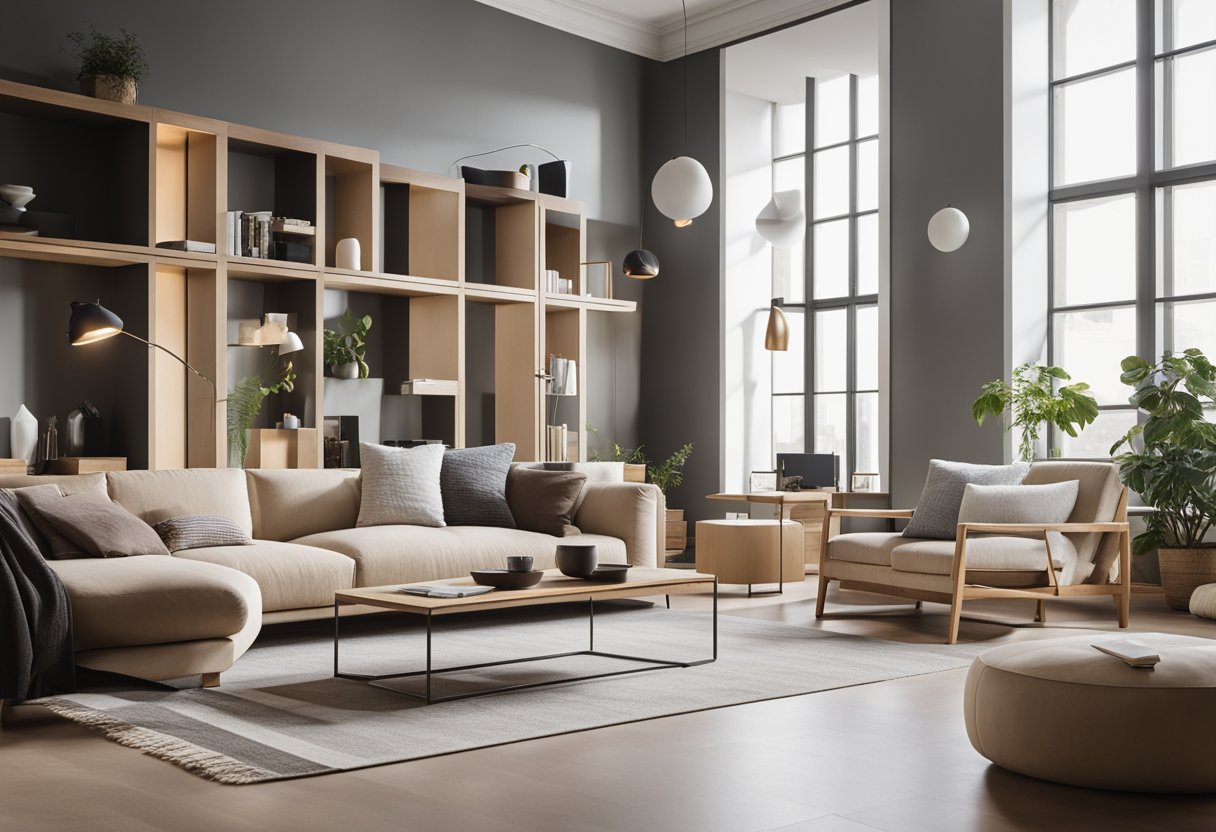
Minimalist decor is all about simplicity, elegance, and functionality. To achieve this aesthetic, there are a few key elements to keep in mind.
Neutral Colour Schemes
The first and most important element of minimalist decor is a neutral colour scheme. This means sticking to colours such as white, beige, grey, and black. These colours create a calm and serene atmosphere, which is perfect for a minimalist space.
Accentuating with Textiles
While a neutral colour scheme is essential, it can also be a bit boring. To add some interest and texture to your space, consider accentuating with textiles. This can include anything from a fluffy rug to a chunky knit throw. These items will add warmth and depth to your space without detracting from the overall minimalist aesthetic.
Incorporating Greenery
Another way to add interest and texture to your minimalist space is by incorporating greenery. This can be anything from a small succulent to a large fiddle leaf fig tree. Not only will this add some life to your space, but it will also help improve air quality and create a calming atmosphere.
Overall, minimalist decor is all about simplicity and functionality. By sticking to a neutral colour scheme, accentuating with textiles, and incorporating greenery, you can create a space that is both elegant and inviting.
Strategies for a Clutter-Free Home
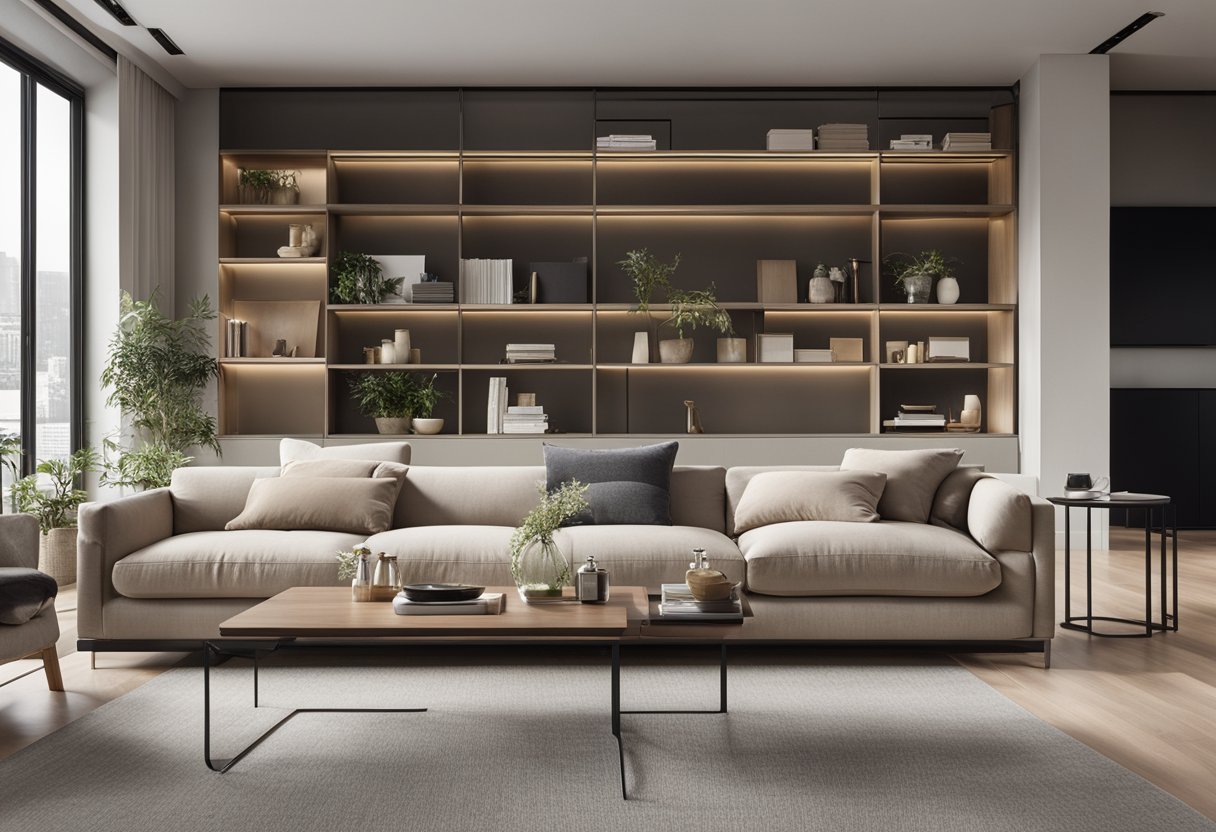
If you’re looking to create a modern minimalist interior design, keeping your living spaces clutter-free is key. Not only does it create a sense of calm and order, but it also helps to make your space feel larger and more open. Here are some strategies to help you achieve a clutter-free home.
Smart Storage Solutions
One of the most important aspects of creating a clutter-free home is having smart storage solutions. This means finding creative ways to store your belongings so that they’re out of sight and out of mind. Some ideas to consider include:
- Utilising under-bed storage boxes to keep out-of-season clothes or bedding
- Installing floating shelves to display decorative items and keep surfaces clear
- Using multi-functional furniture pieces, such as a storage ottoman or a coffee table with built-in storage
- Installing hooks or a pegboard to hang items like bags, hats, and coats
By using these smart storage solutions, you can keep your home organised and clutter-free while still having all your belongings within reach.
Decluttering Techniques
In addition to having smart storage solutions, it’s also important to regularly declutter your living spaces. This means going through your belongings and getting rid of anything that you no longer need or use. Here are some decluttering techniques to consider:
- The KonMari method: This popular decluttering technique involves going through your belongings and only keeping items that “spark joy”.
- The four-box method: This involves sorting your belongings into four boxes: keep, donate, sell, and throw away.
- The one-in, one-out rule: For every new item you bring into your home, get rid of one old item.
By regularly decluttering your home, you can keep your living spaces free of unnecessary items and create a calm and uncluttered environment.
Remember, creating a clutter-free home is an ongoing process. By using smart storage solutions and regularly decluttering, you can create a space that feels open, organised, and stress-free.
Incorporating Minimalism into Lifestyle
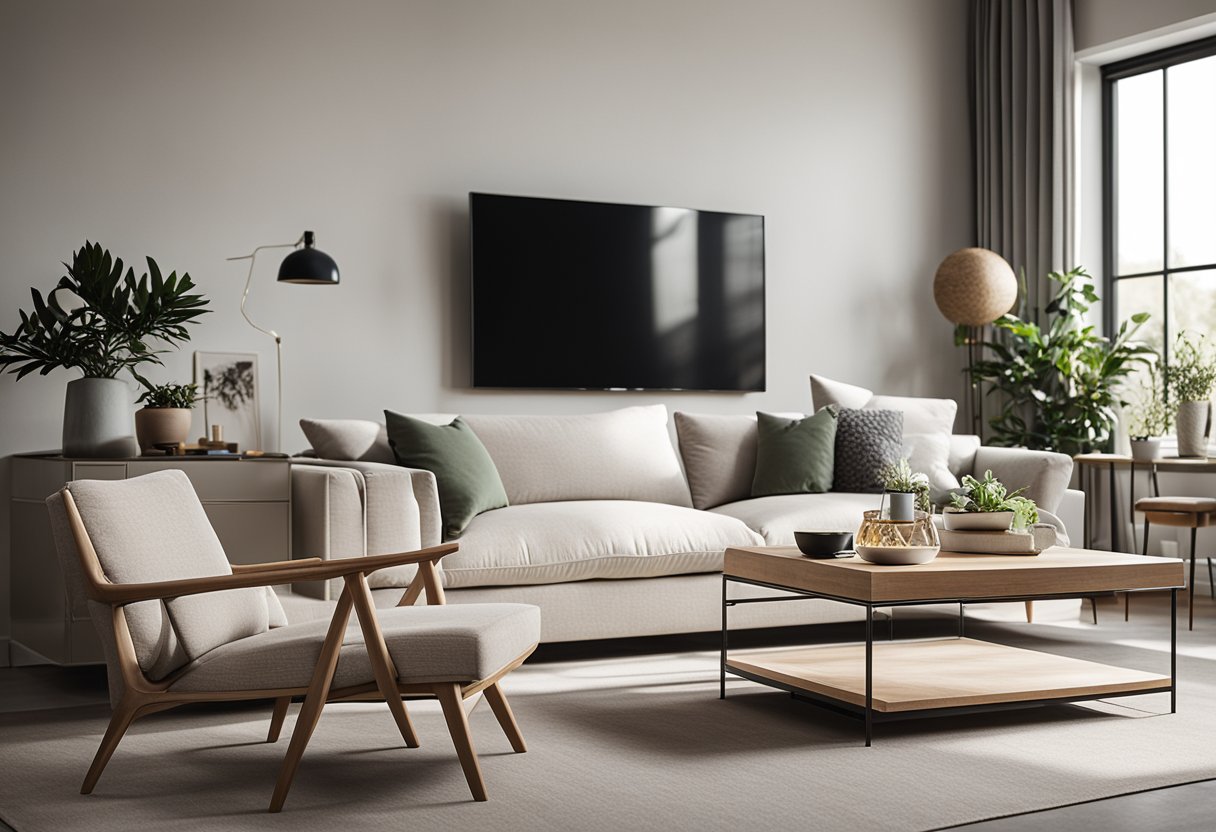
Minimalism is not just a design style, it’s a lifestyle that can bring simplicity, calmness and sustainability into your life. Here are some tips on how to incorporate minimalism into your lifestyle:
Minimalist Lifestyle Tips
- Declutter your space: Minimalism is all about having only what you need. Start by decluttering your space and getting rid of things that you don’t use or love. This will not only make your space look cleaner and more organised, but it will also help you focus on the things that matter most.
- Invest in quality over quantity: Instead of buying cheap, low-quality items, invest in high-quality items that will last longer. This will not only save you money in the long run, but it will also reduce your environmental impact.
- Simplify your wardrobe: A minimalist wardrobe consists of only the essentials. Get rid of clothes that you don’t wear and focus on building a wardrobe with versatile pieces that you can mix and match.
- Practice mindfulness: Minimalism is all about being mindful of your choices. Before making a purchase, ask yourself if you really need it and if it aligns with your values.
Sustainability and Minimalism
Minimalism and sustainability go hand in hand. By simplifying your life, you can reduce your environmental impact and live a more sustainable lifestyle. Here are some ways to incorporate sustainability into your minimalist lifestyle:
- Choose sustainable materials: When buying new items, choose materials that are sustainable and eco-friendly such as bamboo, organic cotton or recycled materials.
- Reduce waste: Minimalism is all about reducing waste. Make an effort to reduce your waste by using reusable bags, water bottles and containers.
- Shop second-hand: Instead of buying new items, shop second-hand. This not only reduces waste but also saves you money.
Incorporating minimalism into your lifestyle can help you live a more intentional, sustainable and fulfilling life. Start by decluttering your space, investing in quality over quantity, simplifying your wardrobe and practicing mindfulness. Remember, minimalism is not about depriving yourself, it’s about focusing on the things that matter most.
Design Details and Finishing Touches
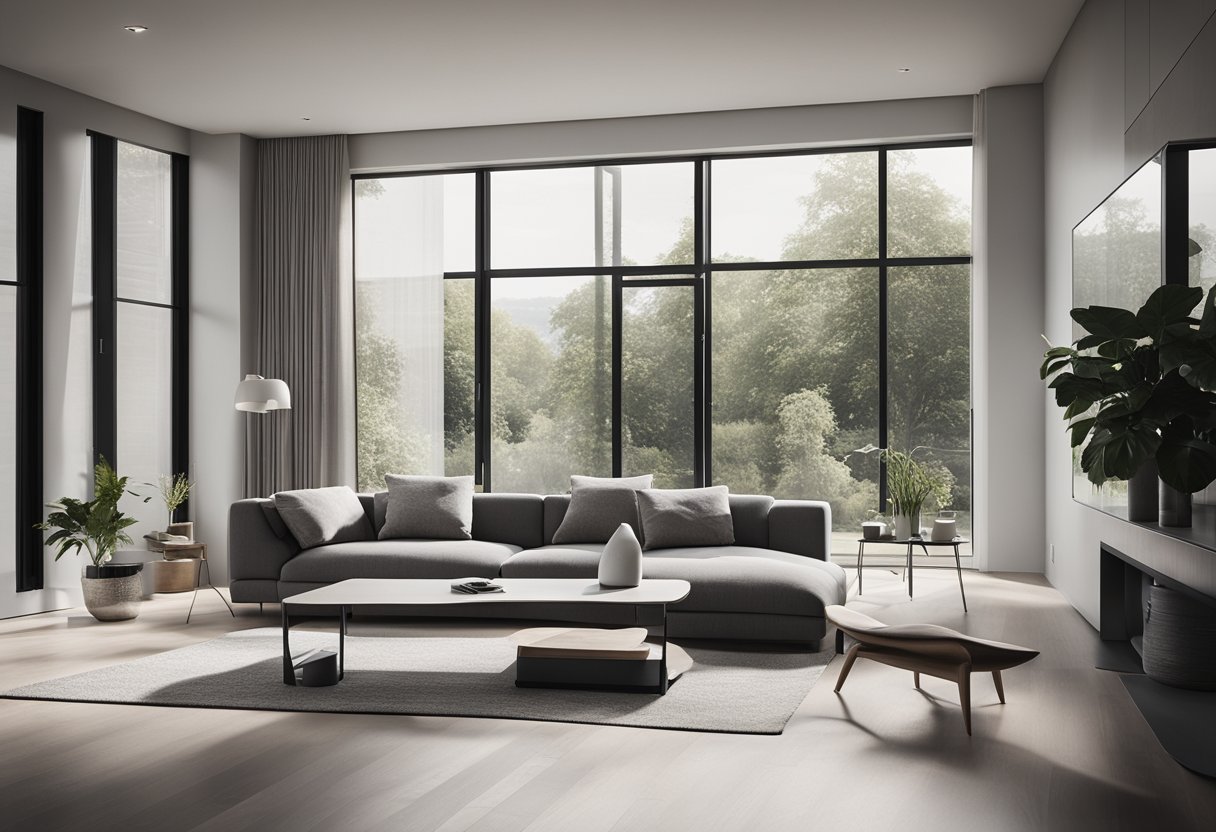
When it comes to modern minimalist interior design, it’s all about the details. These small touches can make a big impact on the overall look and feel of your space. In this section, we’ll explore some of the most important design details and finishing touches to consider when creating a modern minimalist interior.
Architectural Elements
Architectural elements can play a big role in modern minimalist interior design. Clean lines, simple shapes, and a focus on function over form are all hallmarks of this style. Consider incorporating elements like sleek, frameless doors and windows with minimalist frames to create a streamlined look. Frosted glass can also be a great way to add privacy while still maintaining a minimalist aesthetic.
Decorative Details
While minimalist design often focuses on simplicity, that doesn’t mean you can’t incorporate decorative details. Think carefully about the decorative elements you choose, and aim for pieces that are both functional and beautiful. For example, a sculptural vase or a unique piece of wall art can add interest to your space without overwhelming it.
Final Stylings
The final stylings of a modern minimalist interior are all about adding the finishing touches that tie the room together. Stylish storage solutions can be a great way to keep clutter at bay while still maintaining a minimalist aesthetic. Consider sleek, built-in storage solutions that blend seamlessly into the room. Window treatments can also be an important finishing touch in a minimalist interior. Simple, unadorned curtains or blinds can add privacy without detracting from the overall look and feel of the space.
In conclusion, when it comes to modern minimalist interior design, the devil is in the details. By paying careful attention to architectural elements, decorative details, and final stylings, you can create a space that is both functional and beautiful. So why not start experimenting with these design details and finishing touches in your own home? You might just be surprised at the impact they can have.
Choosing Quality Over Quantity
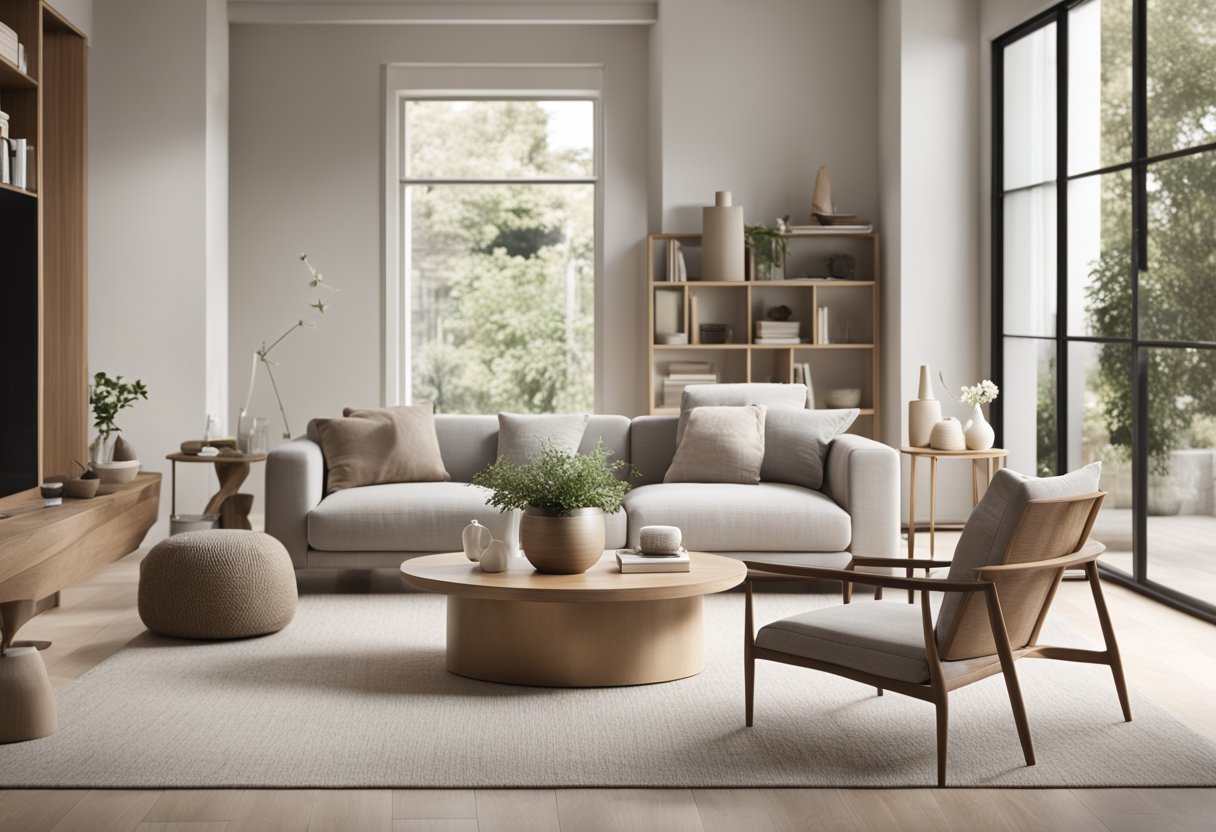
When it comes to modern minimalist interior design, quality should always take precedence over quantity. Instead of filling your space with numerous items that may not stand the test of time, it’s better to invest in a few high-quality pieces that will last for years.
Selecting Timeless Furniture
When selecting furniture for your minimalist interior design, it’s important to choose pieces that are timeless and will never go out of style. Look for classic designs that have stood the test of time, such as a simple leather sofa or a sleek wooden coffee table. These pieces will not only look great in your space now, but they will also continue to look great for years to come.
Investing in High-Quality Materials
Investing in high-quality materials is another important aspect of modern minimalist interior design. Natural materials such as wood, stone, and leather are perfect for creating a minimalist aesthetic. They are not only beautiful, but they are also durable and will last for years. When selecting materials for your space, be sure to choose those that are of the highest quality. This will ensure that your space looks great and will continue to do so for years to come.
In conclusion, when it comes to modern minimalist interior design, quality should always come first. By selecting timeless furniture and investing in high-quality materials, you can create a space that not only looks great but will also stand the test of time.
Advantages of Minimalist Living
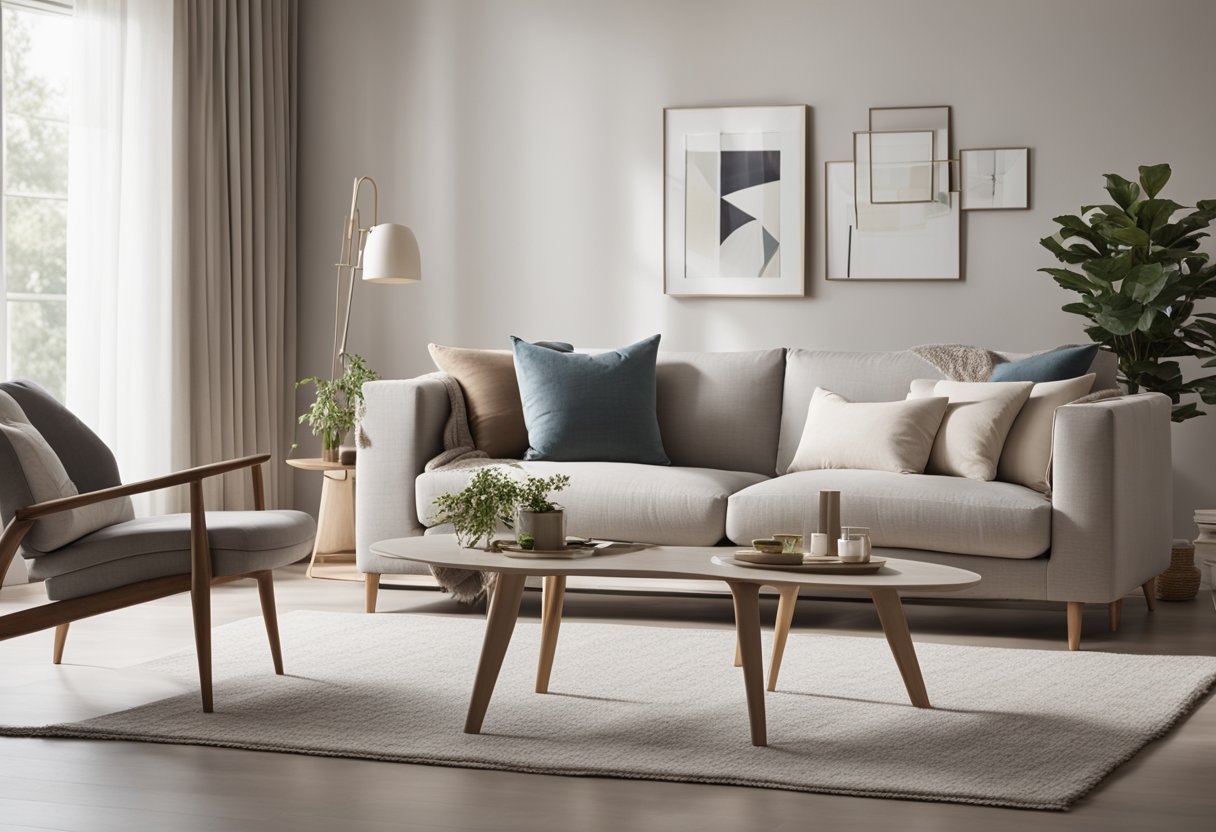
Are you tired of living in a cluttered and chaotic environment? Do you crave tranquility and simplicity in your daily life? If so, then minimalist living might be just what you need. Here are some of the advantages of embracing a minimalist lifestyle in your home:
Tranquility
Minimalist living is all about creating a calm and peaceful environment in your home. By reducing the number of possessions and focusing on only the essentials, you can eliminate clutter and chaos and create a space that promotes relaxation and tranquility. This can help to reduce stress and anxiety and promote a sense of calm and well-being.
Practicality
Minimalist living is also highly practical. By focusing on only the things you truly need and use, you can eliminate unnecessary possessions and streamline your life. This can save you time, money, and energy, as well as make it easier to keep your home clean and organized.
Comfort
Contrary to popular belief, minimalist living doesn’t have to mean sacrificing comfort. In fact, by focusing on high-quality, essential items, you can create a space that is both comfortable and luxurious. By investing in high-quality bedding, furniture, and other essentials, you can create a space that is both comfortable and inviting.
Affordable Luxury
Finally, minimalist living can also be surprisingly luxurious. By focusing on quality over quantity, you can create a space that feels both luxurious and indulgent. Whether it’s investing in high-quality bedding, luxurious bath towels, or a comfortable sofa, minimalist living can help you create a space that feels both indulgent and affordable.
In conclusion, minimalist living offers a wide range of advantages, from promoting tranquility and practicality to offering comfort and affordable luxury. By embracing a minimalist lifestyle in your home, you can create a space that promotes well-being and happiness, while also streamlining your life and reducing clutter and chaos.
Challenges and Misconceptions
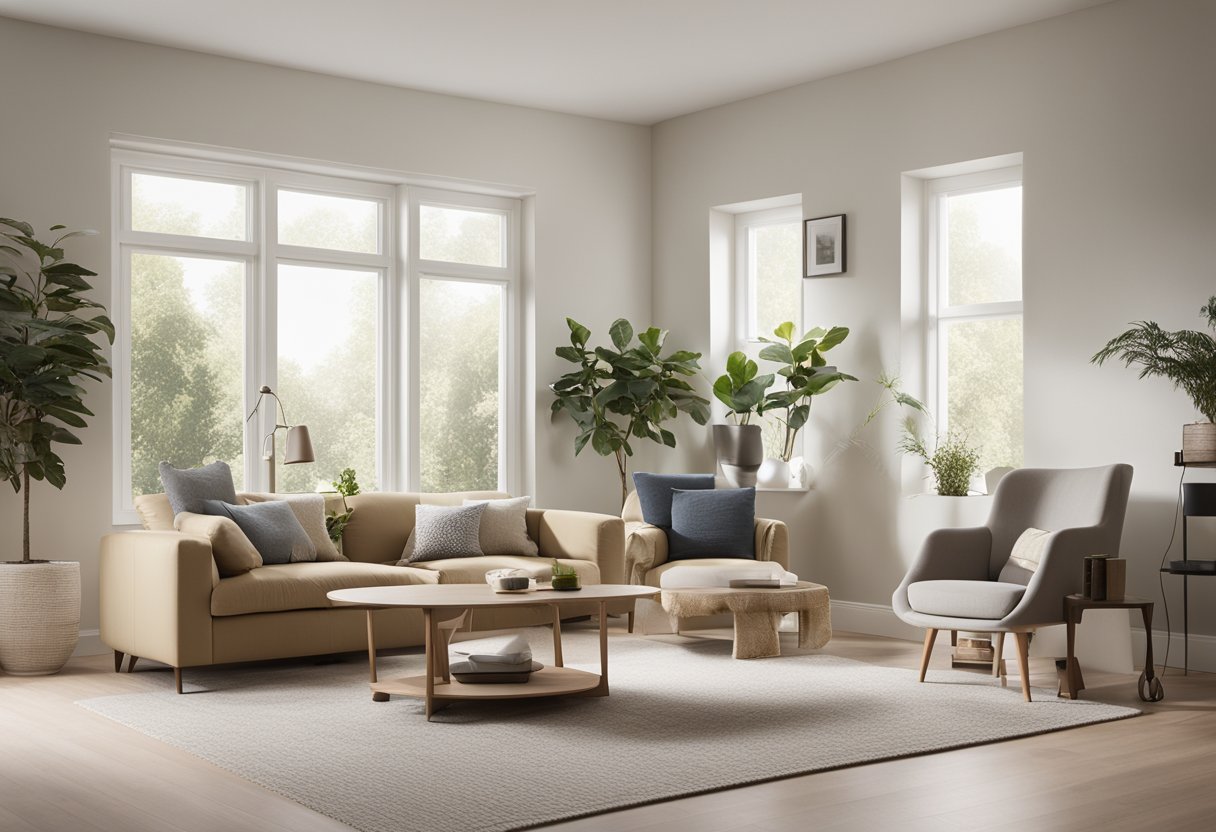
When it comes to modern minimalist interior design, there are some challenges and misconceptions that people often face. Here are a few things to keep in mind to avoid these issues:
Challenge: Finding the Right Balance
One of the biggest challenges with modern minimalist design is finding the right balance between simplicity and functionality. While it’s important to keep things clean and uncluttered, you also want your space to be comfortable and inviting. To achieve this balance, you need to carefully consider each element of your design and make sure it serves a purpose.
Misconception: Minimalism is Boring
One of the most common misconceptions about modern minimalist design is that it’s boring. However, this couldn’t be further from the truth. While minimalist spaces may be simple, they can still be incredibly stylish and sophisticated. By using a combination of textures, materials, and colours, you can create a space that is both minimal and interesting.
Challenge: Avoiding Sterility
Another challenge with modern minimalist design is avoiding sterility. While you want your space to be clean and uncluttered, you don’t want it to feel cold or unwelcoming. To avoid this, try incorporating natural materials like wood and stone, or adding plants and other natural elements to your space.
Misconception: Minimalism is Expensive
Many people assume that modern minimalist design is expensive, but this isn’t necessarily true. While some minimalist furniture and decor can be pricey, there are plenty of affordable options available as well. In fact, one of the benefits of minimalist design is that it often requires fewer pieces, which can ultimately save you money.
By keeping these challenges and misconceptions in mind, you can create a modern minimalist space that is both functional and stylish.
Personalising Your Minimalist Space
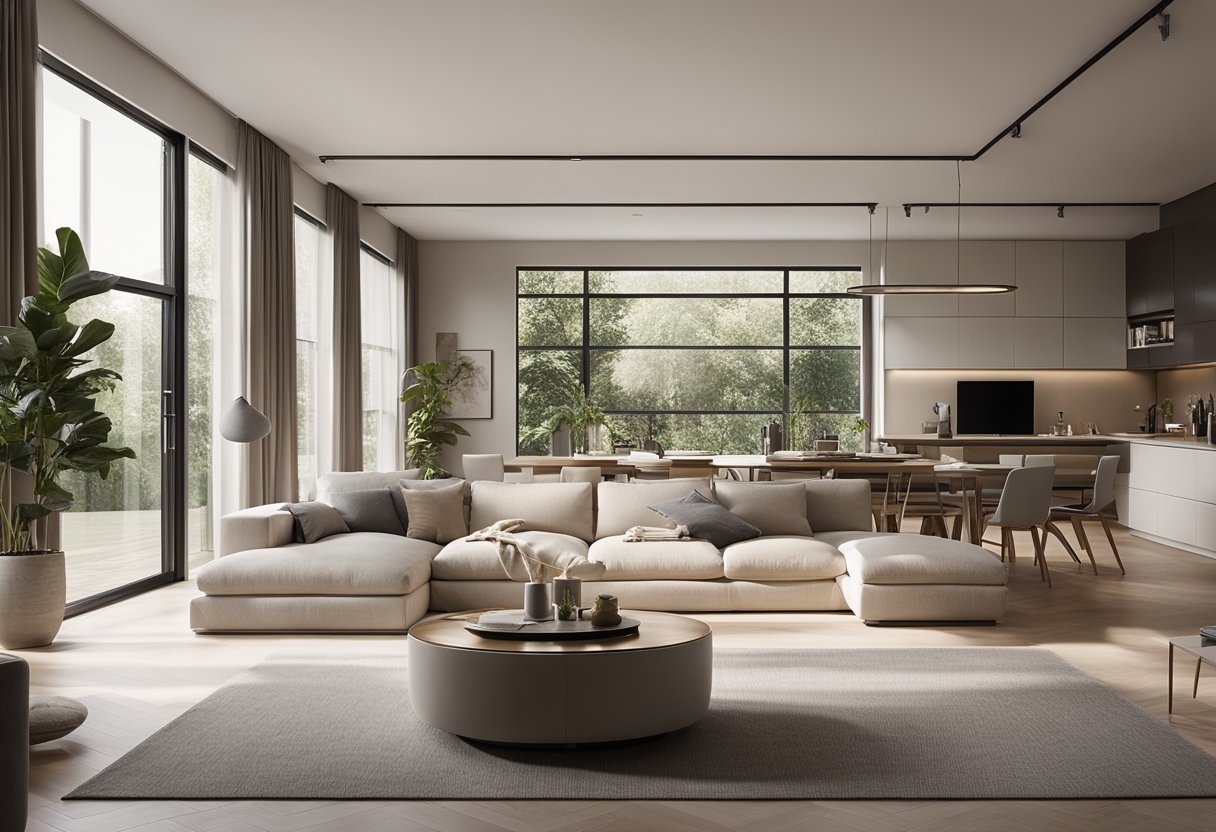
When it comes to designing a minimalist space, you might think that you have to sacrifice your personal style in order to achieve a sleek and cohesive look. However, this couldn’t be further from the truth. In fact, personalising your minimalist space is all about finding the right balance between function and style. Here are a few tips to help you express your individuality while maintaining a minimalist aesthetic.
Expressing Individuality
Minimalist design doesn’t have to mean boring or generic. In fact, a minimalist space can be the perfect canvas for showcasing your unique personality and style. One way to do this is by incorporating pops of colour or texture into your decor. For example, you could add a bold piece of artwork or a textured rug to your space to create visual interest and contrast.
Another way to express your individuality in a minimalist space is by incorporating meaningful objects or mementos into your decor. These could be anything from family photos to travel souvenirs to handcrafted items. By displaying these items in a thoughtful and intentional way, you can add a personal touch to your space without cluttering it up.
Balancing Function and Style
One of the key principles of minimalist design is that form should follow function. This means that every item in your space should serve a purpose and contribute to the overall functionality of the room. However, this doesn’t mean that you have to sacrifice style for function.
When selecting furniture for your minimalist space, look for pieces that are both functional and stylish. For example, a sleek and modern sofa with clean lines can serve as a statement piece in your living room while also providing comfortable seating for you and your guests.
Another way to balance function and style in a minimalist space is by incorporating multi-functional furniture. For example, a coffee table with built-in storage can serve as a stylish focal point in your living room while also providing a place to store books, magazines, and other items.
By following these tips, you can create a minimalist space that is both functional and stylish while also expressing your unique personality and style.
Frequently Asked Questions
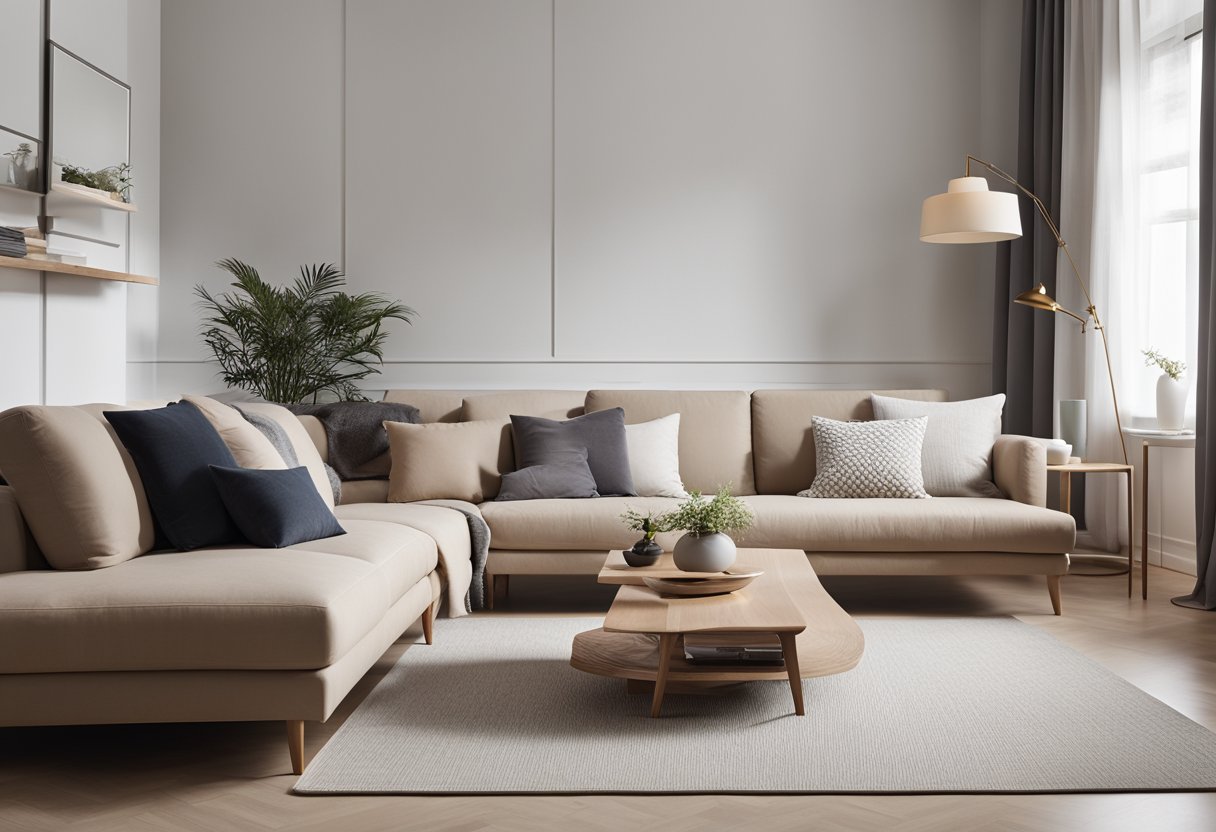
What are the essential materials to achieve a stunning minimalist interior?
To achieve a stunning minimalist interior, you need to focus on using materials that are simple and elegant. The most commonly used materials are natural wood, stone, concrete, and metal. These materials are perfect for creating a clean, uncluttered look that is both sophisticated and timeless.
How can one select furniture that epitomises the minimalist ethos?
When selecting furniture that epitomises the minimalist ethos, look for pieces that are functional and simple. Avoid furniture that is overly ornate or has unnecessary details. Opt for pieces with clean lines and a limited colour palette. Furniture made from natural materials such as wood, leather, or linen can also help to create a minimalist look.
Could you suggest some innovative ideas for a minimalist living room design?
In a minimalist living room, less is definitely more. Start by selecting a neutral colour palette and then add a few statement pieces such as a sleek sofa or a minimalist coffee table. Use lighting to create a warm and inviting atmosphere. Consider adding a few indoor plants to bring a touch of nature into the space.
What are the secrets to creating a serene and luxurious minimalist bedroom space?
To create a serene and luxurious minimalist bedroom space, focus on selecting high-quality bedding, such as soft cotton sheets and a plush duvet. Keep the colour palette neutral and add texture with a cosy throw or a statement rug. Use lighting to create a calming atmosphere and consider adding a few pieces of art to add interest to the space.
What are the defining characteristics of minimalist style in interior design?
The defining characteristics of minimalist style in interior design are simplicity, clean lines, and a focus on functionality. Minimalist interiors are uncluttered and often use a limited colour palette. Furniture is typically simple and functional, with no unnecessary details or ornamentation.
How can small houses embrace the minimalist design philosophy effectively?
Small houses can embrace the minimalist design philosophy effectively by focusing on functionality and simplicity. Select furniture that is multi-functional, such as a sofa bed or a storage ottoman. Use lighting to create the illusion of more space and consider incorporating built-in storage solutions to maximise space. Finally, keep the colour palette neutral to create a sense of calm and spaciousness.


